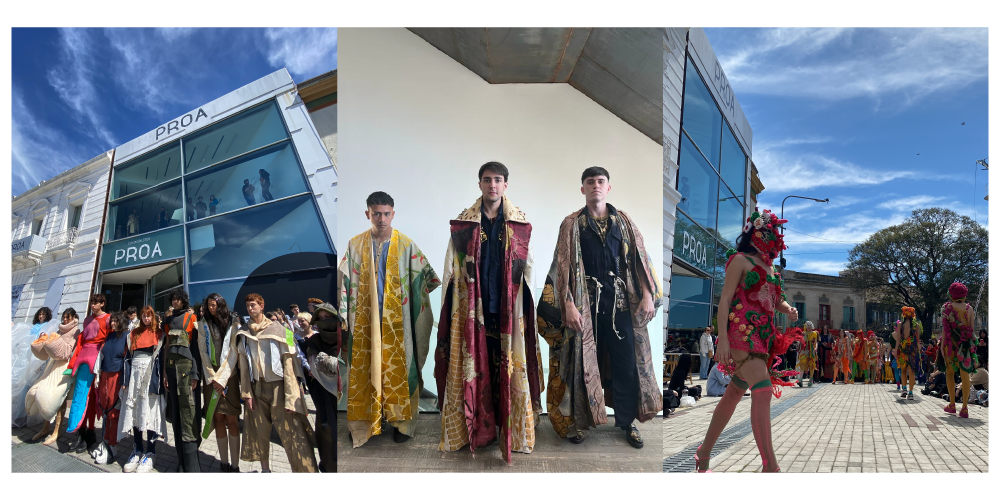Fashion show “Cuerpos, tramas y territorios”
by Cátedra Saltzman (FADU-UBA)
As every year, students from the Saltzman Chair of the Apparel and Textile Design program at FADU-UBA present their projects within the framework of the exhibition at Fundación Proa.
"The El Dorado" is the exhibition that inaugurated the 2023 exhibition calendar and serves as the focal point for the proposal that concludes the academic year for the Saltzman Chair of Apparel and Textile Design, founded in 1989 at the University of Buenos Aires by Andrea Saltzman. Trained as an architect and also a contemporary dancer by vocation, Saltzman not only created a key academic space for the development of several generations of professionals but, in her teaching role, she propelled apparel design as a cultural phenomenon intimately linked to contemporary art. Since 2010, students of the chair have found in the exhibition space of Fundación Proa a conducive stage to unfold their creativity within the intersection of disciplines, nourishing reflection on aesthetic content. With the support of Proa's Education Department, collaborative projects have been developed over the past decade in dialogue with major exhibitions of the institution, including Futurism, Joseph Beuys, Yves Klein, Malevich, Calder, Minimalism, Conceptualism, and Labyrinths. "This year we immersed ourselves in the El Dorado exhibition and explored late in Conjectures. Hence, the name of the performance 'Bodies, textures, and territories' involving all levels of the chair through different exercises, with various perspectives around the exhibition," recalls its mentor.

Divided into thematic axes associated with the curatorial proposal, Project I focuses on the articulation of the body, maps, and appearances of works by artists as textile anatomy evoking the exhibition. It also addresses it through weaving masks, evoking the vegetal universe characteristic of different regions in the play of silhouettes that link land, identity, and culture. In Project II, students work on deconstruction, recycling, and rethinking tailoring, emphasizing that mythological skin of El Dorado as a trace or memory. In Project III, cultural crossings and work on the surface evoke, in an inner-outer play, the idea of the poncho and the kimono, through a surface that plays from the obverse and reverse, in dualities between earth resources and a mercantilist vision. Also, workwear as the first skin once again puts this meeting of languages and meaning in tension. Project III delves into the metamorphosis from the magic of the biological universe, and Project IV, in anchoring to the body and the transformation between dry, golden, worn, and impregnated skins, in an inner-outer play that allows different approaches to the body and silhouette from abstraction.
The performance involves the circus department and the dance troupe of the University of San Martin, linking the exhibition of Fundación Proa, the La Boca neighborhood, FADU-UBA, and the University of San Martin.